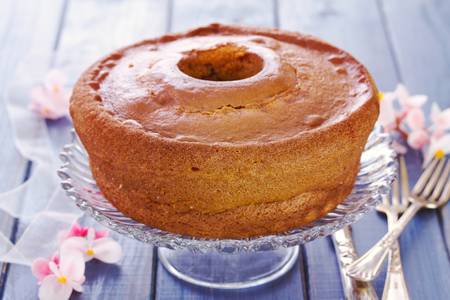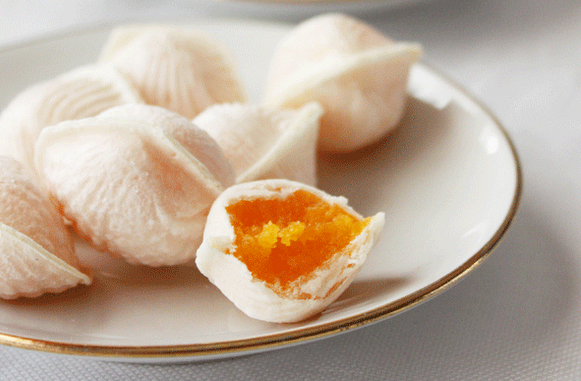Traditional Portuguese desserts: Pão-de-Ló
Pão-de-Ló (Sponge Cake)
The Portuguese Pão de Ló is a rounded cake usually with a hole in the center. It's a very popular cake in Portugal, that is usually eaten in Christmas. With its spongy texture, it's comparable to the English Sponge Cake. The recipe is simple, in the sense that it only has three ingredients: eggs, sugar, and flour.
In Portugal, this sponge cake has an array of variation, specific to some regions, and has become a symbol in these areas. The most famous variations are the Ovar's sponge cake, Alfezeizão's sponge cake, and Margaride's sponge cake.
Pão-de-Ló de Ovar
Ovar's typical sponge cake is shaped like a cornbread and is made of a light, fluffy batter. At the top, the crust is very thin and moist, with a brownish color. The border is made of a creamy batter, with the egg yolk color. Traditionally, it is wrapped in a white linen paper.
Little is known about its origins, we only know that it has conventual origins. There are those who say that a nun has divulged the recipe to some family member or a friend residing in Ovar.
Pao-de-Ló de Alfeizerão
This is a cake which was once served to a king of Portugal. This is the traditional cake of Alfeizerão and is famous throughout Portugal. In Portuguese tradition, it is said that the recipe of the Alfeizerão sponge cake has its origin in the Monastery of Saint Mary of Coz, a female Cisercian convent founded in the twelfth century by D. Fernando, the abbot of Alcobaça in Coz, a few miles away from Alcobaça.
Due to persecution of the religious orders and the consequent closing down of the convent in the early nineteen century, some of the nuns took refuge in Alfeizerão and passed on the recipe to a few women who lived there. Alfeizerão is the birthplace of the nobleman and knight Vitorino Froes, a friend of King D. Carlos who came here often, dividing his time between the property in Alfeizerão and a house in S. Martinho do Porto.
Monastery of Saint Mary of Coz
|
Pão-de-Ló de Margaride
It was at the beginning of the eighteenth century that a woman named Clara Maria began to make this sponge cake. The house was located in the parish of Margaride, in the center of the present-day city of Felgueiras, in the north of Portugal. This cake became known as "Pão de Ló de Margaride" (Margaride's sponge cake).
After the death of Clara Maria, it was Antónia Filix who contined with the manufacture of this appreciated sweet. Later she passed on this task to Leonor Rosa da Silva.
Leonor Rosa da Silva made Margaride's sponge cake known for more than fifty years of work. The success was so great that in 1888, it was attributed to this house the designation of provider of the Portuguese Royal House.
Today, the manufacture remains the most artisanal possible, maintaining above all, the quality of its products.








Comments
Post a Comment